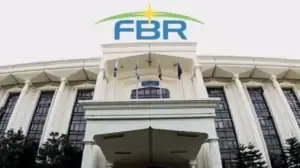The Tesla Autopilot Safety Probe 2025 marks a critical turning point for Tesla’s autonomous driving technology. With federal investigations, significant legal verdicts, and increasing public scrutiny, Tesla’s Autopilot and Full Self-Driving (FSD) features are under intense evaluation. This article explores the latest developments, key findings, legal implications, and industry impact of the ongoing probe.
Background of the Tesla Autopilot Safety Probe
In January 2025, the U.S. National Highway Traffic Safety Administration (NHTSA) initiated an investigation into Tesla’s remote-driving features, including Smart Summon and Full Self-Driving. This probe involves approximately 2.6 million Tesla vehicles—Model S, X, 3, and Y produced between 2016 and 2025. The investigation focuses on accidents where vehicles operated autonomously outside private property, raising concerns over underreported incidents.
An earlier probe, launched in October 2024, scrutinized Tesla’s FSD performance in low-visibility conditions after multiple crashes, some fatal. These investigations reflect growing concerns about the safety and reliability of Tesla’s autonomous systems.
Further issues arose when Tesla’s robotaxi pilot program in Austin, Texas, launched in early 2025, revealed erratic vehicle behaviors such as sudden braking, improper parking, and traffic violations. Tesla’s attempts to classify investigation data as “confidential business information” further fueled regulatory concerns.
Key Findings and Recurring Safety Issues
Despite Tesla’s claim of achieving 7.44 million miles per crash with Autopilot-enabled vehicles—significantly higher than the U.S. average of 702,000 miles per crash—regulators and experts have raised questions regarding the accuracy and transparency of these figures.
Several recurring safety issues have been identified during the probe:
- Phantom Braking: Unexpected sudden stops without clear obstacles.
- Driver Monitoring Gaps: Insufficient alerts to ensure driver attention during Autopilot use.
- FSD Software Errors: Challenges in complex environments, especially under poor visibility and non-standard road conditions.
In response, Tesla issued a voluntary recall in December 2023 to update its driver engagement alerts, following multiple incidents where the system failed to maintain driver attentiveness.
READ MORE: Tesla May Become $20 Trillion Company, Says Keith
Legal Actions and Landmark Verdicts
One of the most significant outcomes of the Tesla Autopilot Safety Probe is the Florida federal court verdict in August 2025, which held Tesla 33% liable in a 2019 fatal crash involving Autopilot. The court awarded $243 million in damages to the victim’s family, marking the first major federal verdict to assign Tesla partial responsibility for an Autopilot-related fatality.
This ruling is expected to set a legal precedent, opening the door for similar lawsuits and potentially delaying Tesla’s nationwide robotaxi expansion. Industry analysts believe this verdict could influence regulatory policies and reshape the autonomous vehicle market dynamics.
Industry Impact and Regulatory Response
The ongoing investigations have intensified the push for stricter regulations on autonomous driving technologies. NHTSA leadership nominees have emphasized the need for proactive oversight, signaling a shift from reactive enforcement to preemptive regulation of self-driving systems.
Tesla’s competitors, including Waymo and GM Cruise, are positioning themselves as safer alternatives, gaining public trust through transparent operations and safety-focused innovations. Tesla’s aggressive approach to autonomy now faces significant challenges as regulatory bodies demand greater accountability and transparency.
READ MORE: Xiaomi YU7 Undercuts Tesla Model Y in China EV Market
The Road Ahead for Tesla Autopilot
Tesla’s future in autonomous driving hinges on its ability to address safety concerns highlighted in the 2025 probe. Enhancing driver monitoring systems, fixing software glitches, and ensuring transparent cooperation with regulators are essential for restoring public confidence.
The Tesla Autopilot Safety Probe has also sparked broader industry conversations about ethical and legal frameworks for self-driving technologies. Moving forward, third-party safety audits and rigorous compliance checks are likely to become mandatory across the autonomous vehicle sector.
Conclusion
The Tesla Autopilot Safety Probe 2025 is a defining moment for the future of autonomous driving. With investigations exposing critical safety gaps, landmark legal rulings holding Tesla accountable, and mounting regulatory pressure, the path ahead is filled with challenges. Tesla’s response to these issues will determine not only its own trajectory but also the broader acceptance of self-driving vehicles globally.








